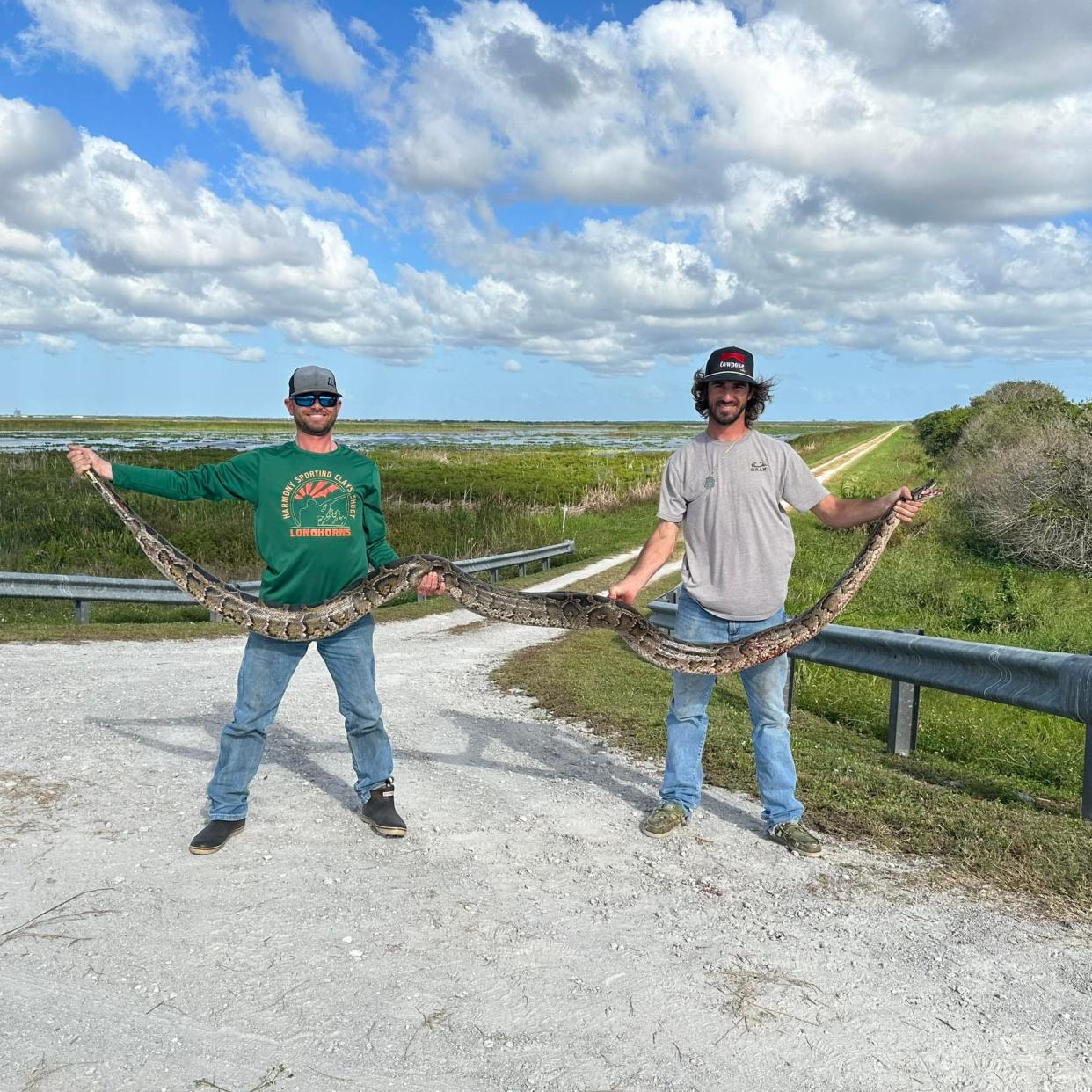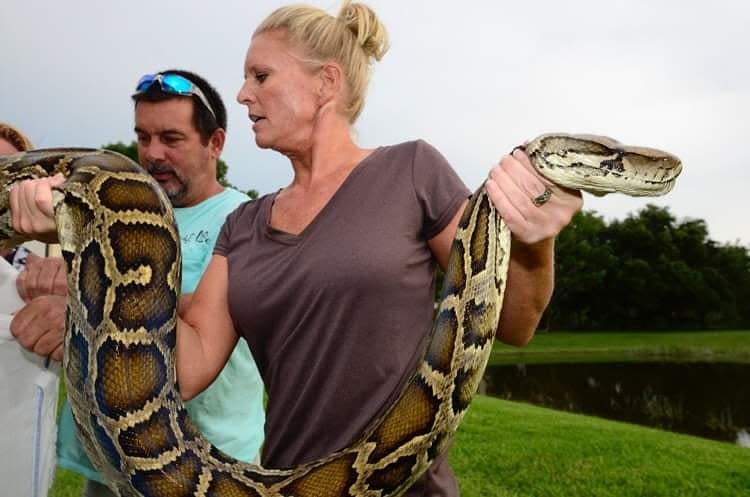12-foot Burmese python caught in Brevard. Is Volusia County next?

Burmese and other python snake species have wreaked havoc in South Florida and the Florida Everglades for decades as an invasive species.
These reptiles can reach up to 23 feet in size, but those caught are usually between 7 and 9 feet, according to the Florida Fish and Wildlife Conservation Commission (FWC).
It would be more concerning if those species found in South Florida were to travel north. And now, it appears they have.
A python around 12 feet in length was shot and killed by hunters looking for alligators on Oct. 29, near Fellsmere in Brevard County.
More: Python around 12-feet killed by hunters in southwest Brevard causing social media stir
Ball pythons in St. Johns County: 'We have found 22 in a matter of four weeks'
Could the invasive reptiles make their way to Volusia County, which shares a border with Brevard?
In early August, The News-Journal asked Stetson University biology professor Terry Farrell about the possibility:
Can Burmese pythons survive in Central Florida?
“The larger python species from South Florida are spreading to the north,” Farrell said. “We don’t know how far north they will go ― it takes time. But they quite likely would survive in Central Florida.”
This is partly because they are continuing to spread in South Florida. There are tens of thousands of pythons living in the Florida Everglades, according to the United States Geological Survey.
What if these snakes make their way to Volusia?
Farrell said the snakes would probably bring impacts similar to those of South Florida.
“They’ll eat our native mammal species ―racoons, possums, rabbits and so on,” he said.
Another negative impact from invasive python species is their spread of parasites and diseases which can also affect local wildlife. This and predation are the most significant problems that invasive pythons bring to Florida, Farrell said.
Farrell said the reason these species are mostly found in South Florida may have to do with “irresponsible people who released a fair number of (pythons), establishing populations.
What kind of snake is this? Here are some common species Floridians may encounter
“Plus, there was a lot of available habitat for them in the South Florida wetlands, including the Everglades,” Farrell said.
Can we prevent large pythons from spreading?
It is difficult to find a solution to the spread of these snakes, as they are elusive animals that are hard to spot (and to catch) in their habitats, Farrell said.
“They tend to not be easy to detect, and therefore they do manage to spread and reproduce,” Farrell said. “And while the state is certainly attempting to diminish their numbers through a variety of snake-hunting efforts, it’s unlikely that’s going to be highly effective.”
He said an important step is to take action to reduce the number of invasive, large pythons species in the pet trade, which the state has already done.
Farrell said it is also uncertain how cold weather could play a part in helping control that spread.
“But it’s not going to be easy to eradicate pythons where they are currently found, or prevent their further spread,” Farrell said. “It will take time … but they will get here.”

This article originally appeared on The Daytona Beach News-Journal: 12-foot Burmese python caught in Brevard. Are they headed for Volusia?

